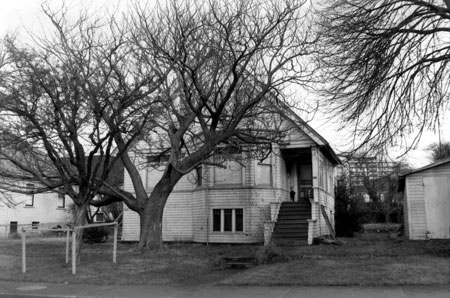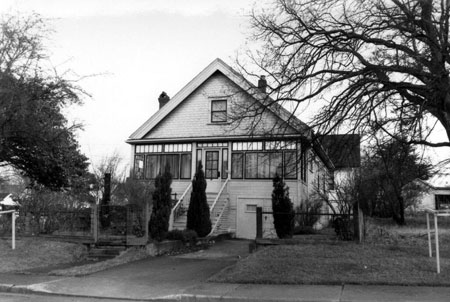Jul
21
by Ted Ross
Then:
|
|
| Image M03107 courtesy of the City of Victoria Archives |
Last month we saw the construction of one and one half-storey houses on Beacon Street on three lots of the Carr subdivision.
Many families occupied these three houses over the years. Contemporary photographs show diapers hanging from clothes-lines. The block immediately west of St. Andrews, the Caledonia Field, was sub-divided for housing in 1908. The neighbourhood was growing. Beacon Hill School opened in 1914 to handle the overload of young scholars from Kingston and South Park schools.
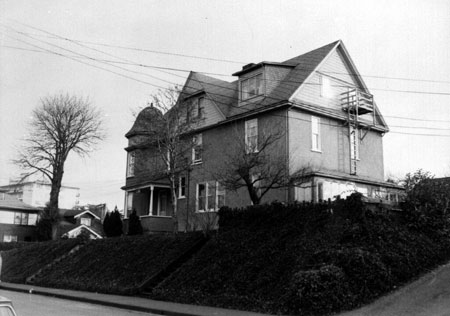 |
| Image M01155 courtesy of the City of Victoria Archives |
The Colonist Hotel, 200 Douglas, provided a place for the locals to socialize. In 1914, at the opening of World War One, the Park Tea Rooms took up business at that address. They served customers until 1920. In 1921 the address was the home of the James Bay Scouts and Cubs. The Palms Tea Rooms operated at the 100 Douglas address until 1952 when, after a run of 31 years, they became Lands End Tea Rooms. The old Colonist Hotel, after a couple of years housing the Boy Scouts, became an apartment building. In 1955, it was renamed 'The Emily Carr Apartments' at 200 Douglas.
633 Simcoe, was occupied by the Hon. Wm. Templeman and his family from 1897 until his death in 1914. The 1915 Victoria City Directory shows a Miss Templeman living at 143 St. Andrews - but it's the same house as 633 Simcoe - it's on the corner!
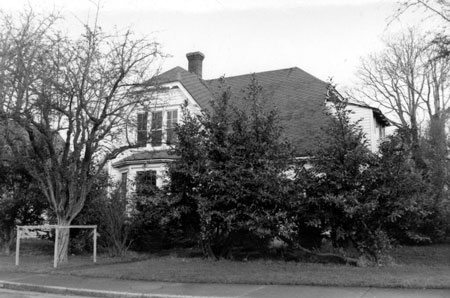 |
| Image M032106courtesy of the City of Victoria Archives |
No more Templemans appear at either address. Mary Bramble lived at 633 Simcoe from 1917 to 1918, followed by Harry Wright from 1919 to 1921. In 1922, the house was occupied by A Hood and family. They stayed until 1944. Hood was the chief clerk and accountant for the Public Works Department of the Government of British Columbia. Probably this old mansion reflected the importance of his government position. In 1945, the dwelling was vacant. An 'Application For a Permit to Construct House Sewers,' dated October 11, 1946, found in the City Archives, shows the mansion was being converted to an apartment building. The number changed with the apartments to 147 St. Andrews, its fourth address! First called the Stanroyd Apartments, the name shortly became Beacon View Apartments.
In 1973 things came crashing down in the block between Beacon and Simcoe, west of Park Lane to St. Andrews. Permits were issued for the demolition of 147 St. Andrews, as well as 652, 658-660, and 668 Beacon on December 28, 1972. It was the end of an era.
|
|
| Image M03108 courtesy of the City of Victoria Archives |
Now:
It's not clear when the buildings actually came down, but by 1976 a new 75 unit apartment building was under construction in the block. The U-shaped four storey building filled Beacon from Park Lane to St. Andrews, went along St. Andrews to Simcoe, and then east on Simcoe to Park Lane.
But Park Lane was gone! A cement sidewalk through the courtyard of the new apartment complex gave access between Beacon and Simcoe. Glover Lane disappeared under the new building, which was two suites across on all four floors, through its entire three-part length.
Originally named Beacon Park Plaza, the date on the BC Hydro connection in the electrical room is June 1976. A number of Sequoia trees, provided by donation, were planted as small juveniles at the corners of, and in, the courtyard of the apartment block around that same time.
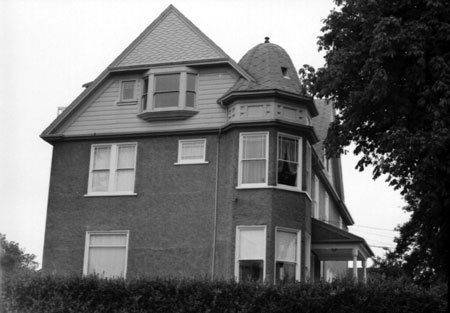 |
| Image M02960 courtesy of the City of Victoria Archives |
By 1984 the apartment block was renamed the Beacon Park Apartments. It was totally renovated in 1989. The building's units are spacious with the majority of the two-bedroom units in excess of 1,100 square feet, most with two bathrooms. There are also some one-bedroom and bachelor units. This building provides housing for seventy-five families, where the demolished houses provided space for twelve families.
In a 1990 picture, the sequoia trees are up to the third floor. Today they tower over the building at the corners and in the courtyard. At least one has been removed because it grew into the building. The courtyard is still a lovely, well-groomed place. The trees are just a lot bigger, and they keep on growing!
The local gathering spot today is the Beacon Drive-In. It has been serving customers at its location next to Beacon Hill School since 1958. Known for having the best ice-cream in the city, it is kept very busy, not just with local residents, but folks from all over town.
Bibliography
Victoria City Archives, "Fire Insurance Maps", 1903; Victoria City Archives, Photos Numbers M03106, M03107, M03108 & M01155, 1972; M02960, 1910; M08513, 1895; Victoria City Archives, "Written Record of Building Permit Applications", 1972-1976; Victoria City Archives, "Application to Connect With Sewer, 633 Simcoe (147 St. Andrews), May 7, 1945; Vancouver Public Library, "British Columbia City Directories", 1860-1955; Emily Carr, "Growing Pains: An Autobiography", 1946; Janis Ringuette, "Beacon Hill Park History", 2009; Wikipedia, "William Templeman", 2015; voyager.library.uvic.ca "Victoria Daily Times",1884-1971; UVIC, "Wharf Street 1881: Richard Carr", 2012; Arix Realty Corporation, "Beacon Park Apartments", 1989; , "Beacon Drive In Restaurant", 2012; interview: Murray Covlin, manager, Beacon Park Apartments, 2015.

